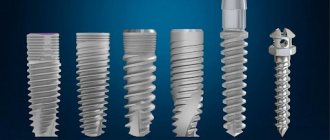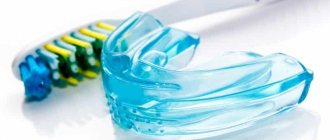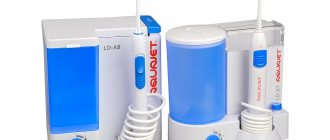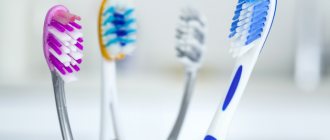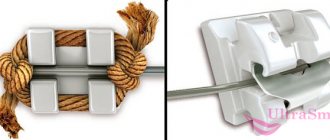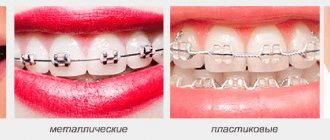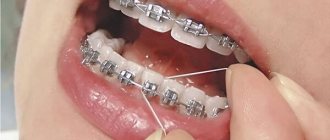When a baby begins to cut teeth, for parents this can be a reason for both joy and sorrow: the baby is capricious, teeth breaking through the gum tissue cause itching, pain and all sorts of discomfort. Special rodents are produced for erupting and growing teeth. Which are called teethers.
What types of teethers are there?
When developing such a specific device as a device to facilitate teething, we proceeded from the following criteria:
- Chemical and food safety of the product. Its long stay in the mouth, prolonged contact with such an aggressive environment as saliva should not cause the breakdown of the components of the rodent, like food.
- Mechanical strength. Under no circumstances should a child bite off and swallow even the smallest piece of teething material with his growing teeth.
- To be bright, attractive - the child will reject the “badass” if it is of an unacceptable and even frightening shape and color for him.
- Be comfortable for the hand to grip so that the child can use the teether as a multifunctional toy, like a rattle.
- The product should be complex in relief - the child, moving it in his hands, will develop fine motor skills of his fingers.
- The size and shape must be such that it cannot be swallowed.
Therefore, a teether will be preferable to a pacifier: it can be bitten by already grown teeth, and harmful microflora will immediately begin to accumulate in places of damage.
Judging by the products arriving in specialized sections of pharmacies, there really are no problems with the aesthetic appeal of this item for children. Parents just need to correctly assess the degree of rigidity of the rodent so that the child does not experience discomfort from its too hard surfaces.
Selection by age
Teethers are divided into three groups that parents need to focus on according to the age of their child.
- For primary incisors. The first teeth - baby incisors - appear in children aged 5 to 10 months on the lower jaw and 7-12 on the upper (for the medial incisors). Then, from 7 to 16 months on the lower jaw and from 9 to 12 for the upper jaw, the lateral incisors grow. For their appearance, it is better to buy soft silicone teethers, which will provide both enhanced massage of the gums and dynamic load on the edges of the tooth emerging from the gums.
- At 12-18 months for the lower jaw and 13-19 months for the upper jaw, the first (deciduous) premolars begin to cut through the gums. This process will be facilitated by rodents made of harder silicone or plastic with a soft and elastic structure.
- The second premolars will begin to grow at the following times: lower at 20-21 months, upper at 25-33 months. For their normal growth, not only biting, but also chewing of something is required. You need hard or semi-rigid silicone or plastic.
For the first age category, they can be of the simplest, uncomplicated form. The principle is “so that there are”. This is usually a triangular or ring-shaped grasping toy that is convenient to take from any position and pick up something dropped during play from a crib or playpen. Weight is minimal.
Later, products of more complex shapes, with multi-colored, bright colors are purchased. Their rigidity, elasticity and wear resistance also change, because what easily withstood the impact of barely breaking through incisors will already fail in the face of canines and premolars.
Vibrating
Teether with a built-in simple pressure-sensitive mechanism. As soon as the child begins to chew on the product, a slight vibration appears, enhancing the massage effect.
Types of teethers
Compound form
If the teether has a complex shape, playing with it can help develop fine motor skills. This is especially true for composite products in the form of rattles or transformers with moving parts.
In the first option, the child’s attention will be attracted by the sound made by the teether. In the second, the main motivation to play with the product will be the unusual shape of it and the parts moving relative to each other. But in both the first and second cases, the main difference will be in the material of the “working part,” that is, the one that is being chewed, and the holder.
The one that the child holds on to most of the time usually has a more rigid structure; this was not done by chance. Sometimes the child gets tired of the flexibility of the working part and wants something extreme. Then he can always unfold the toy and lightly bite its hard part. Not the one made from more or less pliable silicone or latex, but plastic, rigid or semi-rigid. This ensures a change in stimuli and alternation between gentle and hard massages.
Pacifier
The rodent may also have a more traditional shape, familiar to many parents. An example is a pacifier. It can only be called a “dummy” conditionally: inside it, like its outer layer, is completely cast. Or large-porous, with walls whose thickness has been increased so that the child could not bite through it with slightly grown teeth. Although orthodontists do not recommend having a pacifier-shaped rodent. It is as harmful to the formation of the bite as the fingers of a baby.
Teether with cavity
There are also teethers with a sealed cavity, inside of which there is a special gel or even just water. They are placed in the refrigerator for some time. Only, of course, not for the purpose of freezing, in order to cool them to a temperature that causes a comfortable sensation against the background of constant itching or pain in the gums.
Since water or gel quickly heats up from the temperature of the oral cavity, it is better to have not one, but at least a couple of such rodents. The first one has warmed up, but the pain or itching has not yet subsided - the child is immediately given a second one. In most cases, if the lowered temperature of one was not enough to eliminate painful and simply unpleasant sensations, then after the second they definitely go away.
With vibration
An even more advanced model is the vibrator device. The vibration is triggered by simply squeezing the toy with the baby’s gums or teeth. Such toys have a bright, elegant color, which in itself attracts attention. If the child’s color perception is normal, then there is an additional and pleasant, even funny, irritant that distracts the child from the uncomfortable sensations associated with teeth growth. In addition to relieving pain from massage, such chewing vibrators improve blood circulation in the gum tissue.
Teether brush
A teething brush is another option for playing with a baby. Massaging the gums with a silicone brush placed on the parent’s finger invariably evokes a storm of positive emotions in the child: he wiggles his legs, squeals with pleasure, and laughs boisterously.
Made from valuable wood
Rodents made of valuable wood, which are purchased or made independently at the age when the second premolars are already erupting. The wood used for their manufacture is non-toxic hardwood such as maple, oak, juniper, ash, and beech. Their advantage is durability and the ability to give them a wide variety of shapes, from a simple “donut” to a complex topographic surface with smooth or sharp transitions.
Plastic
They have a variety of shapes. They can be combined with a toy, rattle, or look like beads. As a rule, they perform only a massage function.
They are a flat plate or a small bead with grooves or tubercles applied. As a rule, it is due to the difference in texture that the best effect is obtained.
Plastic rings consisting of elements with different textures are popular. Textile books for babies are also used with plastic teethers.
The corners and spine of the book are often chewed during the study process. Therefore, decorating them with such plastic elements helps to combine an interesting activity with benefits for the child.
Deadline for offering a teether to a baby
Teethers are always purchased in advance. One and a half to two months before the possible appearance of the first swelling on the gums. Why is it said so vaguely – “...one and a half to two months”? No one can predict the exact date of teeth appearance; this process even depends on the baby’s nutrition (breastfeeding or artificial milk formula in his diet), the general health index, the presence of vaccinations and much more.
By the time the first teeth appear, a toy of a simple shape should already be ready, easy to grip and with such a hard “biting” surface. You also need to keep in mind that the first months of a child’s development are the most productive in terms of the formation of intelligence and useful habits, therefore, by the time the next teeth appear, the rodent toy should be changed to a more complex, bright and multifunctional one.
Let's sum it up
Despite the wide range, choosing a quality teether is not easy. Before purchasing, you need to check the quality certificates to make sure there are no small parts or unpleasant odors. Be prepared that the rodent you choose may not be suitable for your baby, so it is wise to start with relatively inexpensive, but high-quality models. This way you will avoid unnecessary expenses. In order not to make a bad choice, take note of the models from our rating that most parents liked.
How to survive the difficult period when your baby is teething? Watch a video with useful tips from Dr. Komarovsky:
Choosing a teether
When purchasing a product you need to pay attention to the following things:
- Manufacturer country. Look at the country's industrial rating. If it has a developed industry and a chemical industry in particular, one can hope that everything is in order with the safety of products intended for infants.
- The certificate is in Russian. A manufacturing company that values its reputation, when sending goods to the foreign market, will try to certify the products in accordance with the norms and laws.
- Buy such rodents only in pharmacies, in departments of goods for mothers and their small children, or in specialized stores with official licenses from the Ministry of Health.
- However, the certificate can also be faked - especially if the product is in strong demand. Examine the product carefully: sharp corners, edges and ribs, burrs, packaging defects, sloppy or smeared printing should alert you and make you refuse to purchase. Remember that a child's skin and gums are much more vulnerable than yours, and rough parts can damage them.
Most often, the choice when purchasing the first, simplest teethers is made between silicone products and latex ones. Silicone is more elastic and has increased rigidity compared to latex. But latex, for all its softness, often turns out to be more durable. In addition, latex, even in the absence of an orthodontic mold, will not spoil the bite. There, the requirements for deviations from the recommended forms are much stricter.
Does your child need it?
A teether is a very useful toy. During the period of teething, the baby often becomes restless, gnawing on his hands and hard rattles. The teether relieves discomfort in the baby's gums and relieves swelling.
Baby teeth usually appear between 4 and 6 months. However, it is better to purchase a teether earlier. The tooth has not yet appeared, but it is already growing inside the gum, it is swelling and itching. It is impossible to indicate the exact date when eruption will begin. Developmental norms determine a wide time interval, so it is useful to give the first teether to the child when he begins to drool, pull objects into his mouth, and stuff his fist into it.
For a baby whose first tooth is about to erupt, a light toy of a simple configuration is suitable, it is not difficult to hold in his hands. By 6 months, you should purchase a model with protrusions intended for the lateral teeth. For a baby after 7 months, a rodent made of durable material, designed for biting and chewing with the outer teeth, will be suitable.
How to use teethers
You won’t get confused about the properties of many models of products for teething in children, because they are all equipped with detailed instructions for their care and use. But there are rules common to all models that are worth knowing in advance:
- Rodents are not sterilized in ovens, microwaves, boiling water, or even heated strongly (more than 60⁰C). Do not wash in the dishwasher;
- If cracks, chips, sharp edges appear in the product, or filler begins to leak from it, it must be thrown away immediately;
- Models with gel or water inside, which are cooled in the refrigerator. Placing such rodents in the freezer for faster cooling will cause irreversible changes in the silicone structure of the shell, so this is strictly not recommended!
- A newly purchased rodent needs to be sterilized. They just do this by washing with baby soap and then rinsing thoroughly. Or alcohol - if this is allowed by the instructions. Teether vibrators with batteries inside are not allowed to be heated with steam or dipped in boiling water.
- A child may have his own preferences that are incomprehensible to us. Therefore, if you actively reject a toy of a certain type or shape, do not try to impose such a model on him. It’s better to change it immediately and offer another one. In this regard, do not try to immediately buy the best and most expensive - what if the little one doesn’t like it?
Features of care
A teether is an accessory that is constantly in the child’s hands or mouth. Therefore, it is necessary to be careful about the rules for caring for the product.
Depending on the material from which it is made, maintenance may have its own subtleties.
Experts recommend following general rules when handling children's things.
- After use, the product should be rinsed with water or washed with baby detergent and dried thoroughly.
- Rodents are stored dried and in closed packaging.
- Silicone rodents should be sterilized or doused with boiling water at least once every 3-4 days. Silicone products cannot withstand sterilization, so they are simply doused with boiling water. Wooden teethers just need to be washed and dried. They do not tolerate high temperatures and frequent exposure to moisture.
- Latex and silicone models are recommended to be changed every 1-2 months. Wooden ones are made from tree species with antiseptic properties. Therefore, the products allow long-term use. Their replacement is recommended in cases where cracks, scorches or splitting appear on the wood.
Modern teethers have undeniable advantages and allow you to avoid the use of medications that are applied to the gums to stop itching.
The best teethers are bright, safe and exciting products that will become an indispensable assistant for mom.
Model rating
By compiling this rating, we are in no way trying to put pressure on you with authority or somehow advertise specific models. Dry sales statistics, nothing more.
Avent
For the English Avent line, the price of models starts from three hundred rubles and ends at seven hundred. It includes products designed for all stages of dentition development in the upper and lower jaws. The most expensive of the series have a hermetically sealed helium filler inside to accumulate cold, if necessary.
Kanpol Baby
The Polish teethers called Kanpol Baby stand apart. They can be given to a child as early as a month. Almost all have a sealed cavity filled with water, which allows the products to be pre-cooled before giving to the child.
Price – from 100 to 800 rubles. The former have a simple donut shape, while the latter are animated toothbrushes with silicone or latex bristles. From a very young age, children are taught to use dental hygiene products. May have the shape of a banana, pea pod, etc.
Baby Ono
Baby Ono is another device from Poland. This is a brush that is placed on the parent's finger. Sold in a sealed transparent case. Helps both in massaging the gums and in removing food debris. You can use it from birth, and it costs between 150-180 rubles.
Nuby
American multifunctional bracelet, composite in composition (rubber-plastic). Brightly colored with safe dyes in the mass of the material, it has a set of movable beads, which is convenient for practicing fine motor skills of the baby’s hands. The versatility of the bracelet is also expressed in the fact that it is suitable for use from 3-4 months of a child’s life until the complete eruption of the entire set of teeth.
Pigeon
It has a simple “ring with ears” shape and a laconic design, including color. In the ring-shaped handle, balls roll in the internal tunnels, making ringing sounds. The “ears” are flat, with a relief surface made of silicone. It has no unnecessary details that distract attention, and costs about 350 rubles.
Sophie Woolley - Giraffe
The toy is made in France, made from safe and environmentally friendly rubber, natural and high quality. It has a velvety surface that is pleasant to the touch, imitating mother’s skin. You can give such a toy from the first months of a baby’s life. From three months, he will actively drag it into his mouth and scratch his gums with it, preparing them for the eruption and growth of teeth.
Tiny Love "Flower"
A complex toy in the shape of a dumbbell. Light balls roll and sound in the “handle”. At one end there is a spherical extension with a rattle ball placed in it. At the other end there is a “flower” with ten radial petals made of silicone, which can be sucked and chewed with pleasure, while the other petals rustle funny. The product is intended for babies of all ages, but it is still preferable to give it starting from 7-8 months - the toy is massive. It can cost up to 450 rubles.
Teether Chicco “Cherry”
Italian brand for children in the first months of life. A sealed bunch of silicone cherries contains a gel that is cooled in the refrigerator. Made from wear-resistant, environmentally friendly silicone. Allows freezing, which can be used for both storage and sterilization. Price 320 rubles.
Elephant Philips Avent
Teether in the shape of an elephant, has a hole for a child's hand to grasp, suitable for children from 3 months to a year and older. It is made of heat-resistant and healthy material, which means it can be subjected to heat treatment. Weighs a little, costs up to 550 rubles.
Advantages and disadvantages
It is easier to talk about the advantages and disadvantages of teethers when we are not talking about all such products as a whole, but about a specific variety made from a particular material. If we talk in general about all products of this kind, then the benefits for babies are as follows:
- due to safe chewing, the child begins to feel better, does not experience stress and can sleep normally;
- some teethers are filled inside with water or a special cooling gel, which almost completely eliminates discomfort;
- A teether is not only an object useful for oral health, but also a toy that entertains the baby and helps him quickly develop fine motor skills.
If the teether is chosen correctly, then it should not have any disadvantages. Problems are possible only if the material turns out to be not so safe or too fragile. In addition, it may be that the chosen model simply does not help scratch the gums where the baby experiences discomfort.
Comparative characteristics table
A table with the main characteristics of the products from the rating will help you choose a teether based on age or material.
| Product name | Material | Minimum age | Additional effect |
| Panda by Hevea | Natural rubber | From birth | No |
| "Cherry" from Chicco | Rubber | 4 months | Cooling |
| "Lion" by Nuby | Plastic | 3 months | Vibration, cooling |
| “Keys” from Canpol Babies | Plastic | From birth | It's thundering |
| "Crab" from Baby Team | Silicone | 4 months | No |
| "Sophie the Giraffe" from Vulli | Natural rubber | From birth | Squeaks |
| Oball "Bright Orbit" | Plastic | From birth | No |
All models of teethers presented in this rating were carefully selected and fully comply with sanitary standards and safety requirements.
